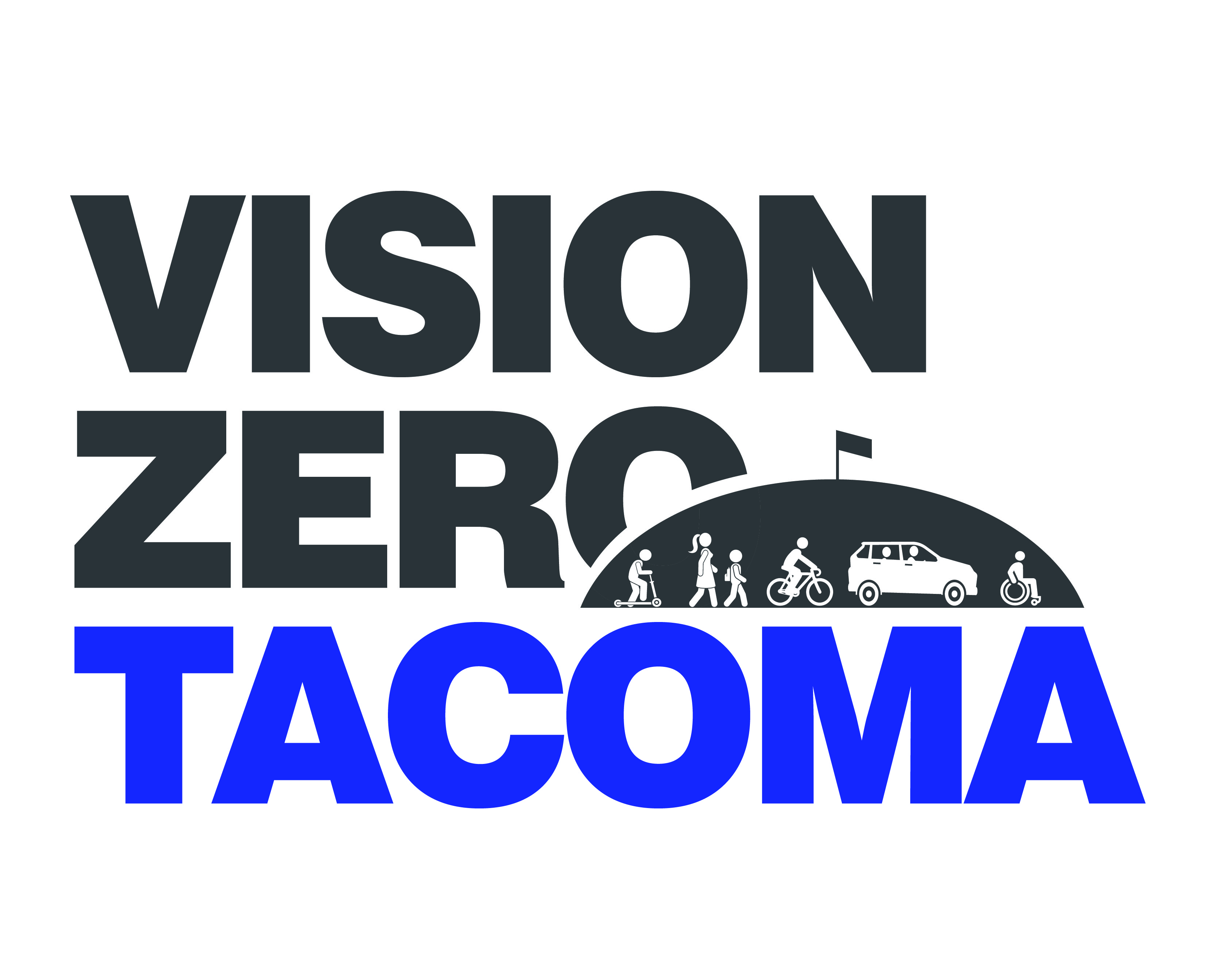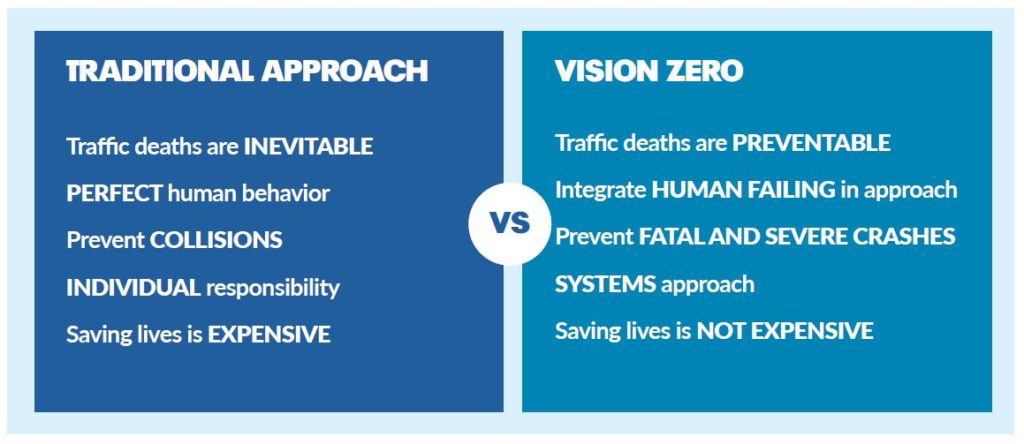
In 2020, the Tacoma City Council passed Resolution 40559, committing to Vision Zero and the goal of eliminating traffic fatalities and serious injuries in the City of Tacoma by 2035.
Road Safety Audits
In 2024, three Road Safety Audits (RSAs) were completed on South Tacoma Way, South Yakima Avenue, and South Pine Street, with plans for six more audits over the next two years, funded by a grant from the Washington Traffic Safety Commission. RSAs involve a collaborative team from various departments, including Public Works, Planning and Development Services, the Fire Department, Police Department, and Pierce Transit, all working together to assess and enhance road safety for all users. These audits aim to identify safety issues and opportunities for improvement, leading to actionable steps for near-term fixes and potential corridor redesigns to enhance safety.
For more details, please click on one of the following links for each corridor's respective RSA technical memo and the Year 1 Summary Report: S Tacoma Way Tech Memo, S Yakima Ave Tech Memo, S Pine St Tech Memo, and Year 1 Report.
New Speed Limits in 2023!
Effective January 1, 2023, the speed limit on Tacoma residential streets will be 20 miles per hour (MPH). A residential street is located in neighborhoods mostly consisting of homes, parks, and schools. Additionally, the arterial streets in four neighborhood business districts will be lowered from 30 MPH to 25 MPH: 6th Avenue, Old Town, McKinley Hill, and Lincoln. Proctor and South Tacoma neighborhood business districts are already 25 MPH.
Learn More About Tacoma's Speed Reduction Efforts
Vision Zero Action Plan
Tacoma's Vision Zero Action Plan is now final! This data-driven document will be used to guide Tacoma's investment in traffic safety. The Action Plan is just the start of Tacoma's commitment to ensure transparency and accountability and work with urgency to reduce the number of people killed or seriously injured while traveling in Tacoma.
Tacoma Vision Zero Action Plan
Data Dashboard
The Vision Zero Data Dashboard is an interactive tool that displays some of the key crash trends and locations in Tacoma. Using data to transparently track and communicate the City's efforts and the outcomes of these efforts is central to achieving the Vision Zero goal.
Vision Zero Data Dashboard
What is Vision Zero?
According to the Vision Zero network, each year, more than 42,000 people —
the population of a small city — are killed on streets in the United States, and thousands more are seriously injured. A Vision Zero approach sees these traffic deaths and serious injuries as preventable.

Image credit: Vision Zero Network
How was the Action Plan developed?
The actions in the Vision Zero Plan were identified based on the findings from:
What are we doing now?
Using the Vision Zero Action Plan as a guide, we are exploring multiple opportunities to improve our transportation system for people driving, walking, rolling, biking, or taking transit, including:
- Designing streets that make safe behavior the default.
- Making changes to our codes and policies, such as reducing speed limits, adding automated enforcement traffic cameras in key locations, and calming traffic in our neighborhoods, that result in safer roadways for all.
- Educating drivers to be safe and respectful of all road users.
- Creating systems for evaluation as we make ongoing improvements to our shared roadways.
- Significantly increasing our investments in active transportation projects (sidewalks, crossings, bikeways) and ensuring that every transportation project is approached as an opportunity to improve safety.
Get Involved
This website will share information on our efforts to reaching Vision Zero. To sign up for Vision Zero Updates, please email tacomamobility@cityoftacoma.org.
Additional Resources:
Project Factsheet - English (January 2022)
Project Factsheet - Español
Project Factsheet - Pусский
Project Factsheet - ភាសាខ្មែរ
Project Factsheet - Tiếng Việt
Project Factsheet - 한국어
Washington State Department of Transportation Crash Portal